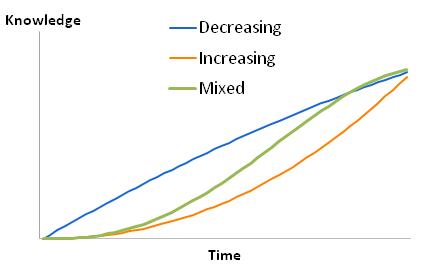Learning curves
July 19, 2009
This is the first (brief) official post of this blog. And perhaps a good intro to talk about learning curves.
In March, I went snowboarding for the first time (I was 27 at the time). It was painful and humbling. Nothing prepares you for having to balance and manoeuvre on a completely new surface. By the end of the third day, I was ready to quit – every fall was like feeling all previous falls again at once. On the fourth day there was heavy snowfall – bad news for my skier friends, but at least the falls would hurt less. So I said (literally) “I’ll give it one last try”.
Low and behold, the heavy snow made all the difference. I could now turn and balance. I went down the mountain faster than my skier friend. At one point I simply was tired and so went off a jump into a snowbank. HEY! THIS IS FUN!
Revelation: I often think of myself as “learning” new things, mostly because I read them or think about them. However, this isn’t learning, at least not in terms of motor skills or concepts – it’s just being informed. Actual learning, let’s call it creating a new pattern of ability in your brain, be it snowboarding, surfing, mathematical or statistical concepts is often uncomfortable and frustrating. It involves doing something poorly (at least at first), and knowing you aren’t doing it well. But you have to remember that learning in any domain is accumulatory – the first achievements are always the hardest, but subsequent achievements leverage previous ones.
I see three basic types of learning curves– increasing marginal gains, decreasing marginal gains, and mixed. Figuring out what drives each of these allows you to understand which one you are on, and what you can expect in the future. This makes sticking out the curve easier or harder, because you know if you just hold out a little longer, you can reach so much further.

Anders K. Attaining excellence through deliberate practice: Insights from the study of expert performance. The pursuit of excellence through education. 2002 ;21.